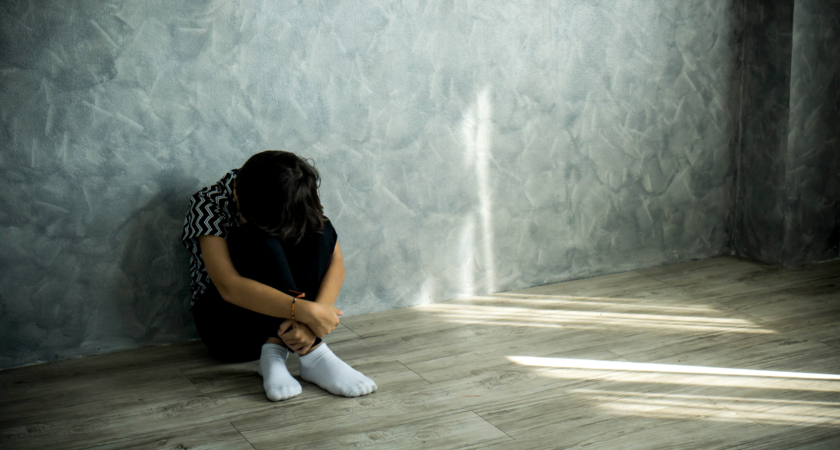It will soon be two years since severe restrictions related to the COVID-19 virus have been in place in many countries around the world. Who would have thought that grand-parents would not be able to hug their grand-children for months; that teenagers would not be able to “hang out” and build relationships; that young kids would not be able to share toys in their kindergarten classrooms and would have to wear masks all day. In many jurisdictions, recurring lockdowns resulted in prolonged school closures, stay at home orders and so on.
It would have been a miracle if COVID-19 measures did not affect people’s mental health. Especially the mental health of children and youth, thus causing issues with their ability to develop socially and physically, study, organize their time.
But how bad have COVID-19 emergency measures affected children and youth?
On December 7, 2020 the preliminary results of the SickKids study were published. The summary of findings was that 70 per cent of children and youth surveyed reported worse mental health during the initial spring lockdowns. This number has not improved since.
The results of a study “An investigation of mental health status of children and adolescents in China during the outbreak of COVID-19”, published in June 2020, have shown that “when emotional support and spiritual guidance from family members, teachers, as well as other significant peers and adults in their lives could not be met due to home confinement, deferred back-to-school and lifestyle changes, it adversely affected the mental health of children and adolescents”. The study has found that 22.28% of respondents were suffering from depressive symptoms. Smart phone and Internet addictions increased.
In April 2020, researchers in Italy and Spain surveyed 1,143 parents of children and youth between 3 and 18 years old. They were asked questions related to how quarantine affected their children and themselves. 85.7% of the parents noticed changes in their children’s emotional state and behaviour during the quarantine. 76.6% reported significant problems with concentration, 52% reported boredom, 39% reported irritability and 38% reported nervousness. The feeling of loneliness was reported by 31.3% of respondents. Parents noted the extreme general levels of stress in their families, less time spent doing physical activities and more time spent in front of the screens.
On January 7, 2021 the CTV News Montreal reported on another study conducted by the University of Montreal that has found that “parents are increasingly worried about their kids’ mental and emotional health, with more than half of the parents surveyed concerned about it”.
In May 2020, Dr. Anthony Levitt from Sunnybrook Hospital in Toronto published a guide for families warning that COVID-19 measures could cause anxiety and depression issues even in previously healthy youth. Individuals who already had issues and who were prone to addictions were at even greater risk. The guide provides useful recommendations for families, as well as contact information for Kids Helpline and other services in Canada and specifically Ontario.
Cannabis Consumption Statistics During Covid in Canada by Age
Of course, one of the scariest outcomes of depression are overdoses and suicides.
The results of an analysis published in the Official Journal of the American Academy of Pediatrics, revealed that the rates of suicide ideation among youth 11-21 years of age were significantly higher in March and July 2020 (compared to the same period in 2019), as well as the rates of suicide attempts were higher in February, March, April and July 2020 (compared to the same period in 2019). Demographic characteristics were not a factor.
Canadian youth have contacted Kids Help Phone more than 4 million times in 2020. In 2019 the number was 1.9 million. Out of approximately 800 calls and texts a day – 10 are active suicide cases where emergency services are called to help.
Throughout 2021 we have been dealing with the same issues.
In Ontario, when schools open for face-to-face instruction, offering children and youth some relief from isolation and allowing some normalcy, students as young as 4 are required to wear masks all day and practice social distancing.
WHO has released a complete guide titled Coronavirus disease (COVID-19): Children and masks, where they indicated that “children aged 5 years and under should not be required to wear masks. This is based on the safety and overall interest of the child and the capacity to appropriately use a mask with minimal assistance.
WHO and UNICEF advise that the decision to use masks for children aged 6-11 should be based on [a number] of factors”.
In September an article was published by CTV News discussing the impact of mask wearing at school on children. In it, a professor of applied psychology and human development at the University of Toronto, Kang Lee, says that even though children are adaptive, masks could pose problems in interacting with peers and teachers, including recognizing faces, recognizing emotions, language development and comprehension.
Covid-19 vaccines do not prevent virus transmission and, therefore, are not effective at mitigating the spread. Many countries have now stated that the virus cannot be eradicated.
After almost 2 years of extreme COVID-19 emergency measures it is urgently important to conduct a harm vs benefit analysis of how these measures impact children and youth, what potential short term and long term consequences could these measures lead to and how public health practices and policies should be changed to ensure children and youth do not suffer.
